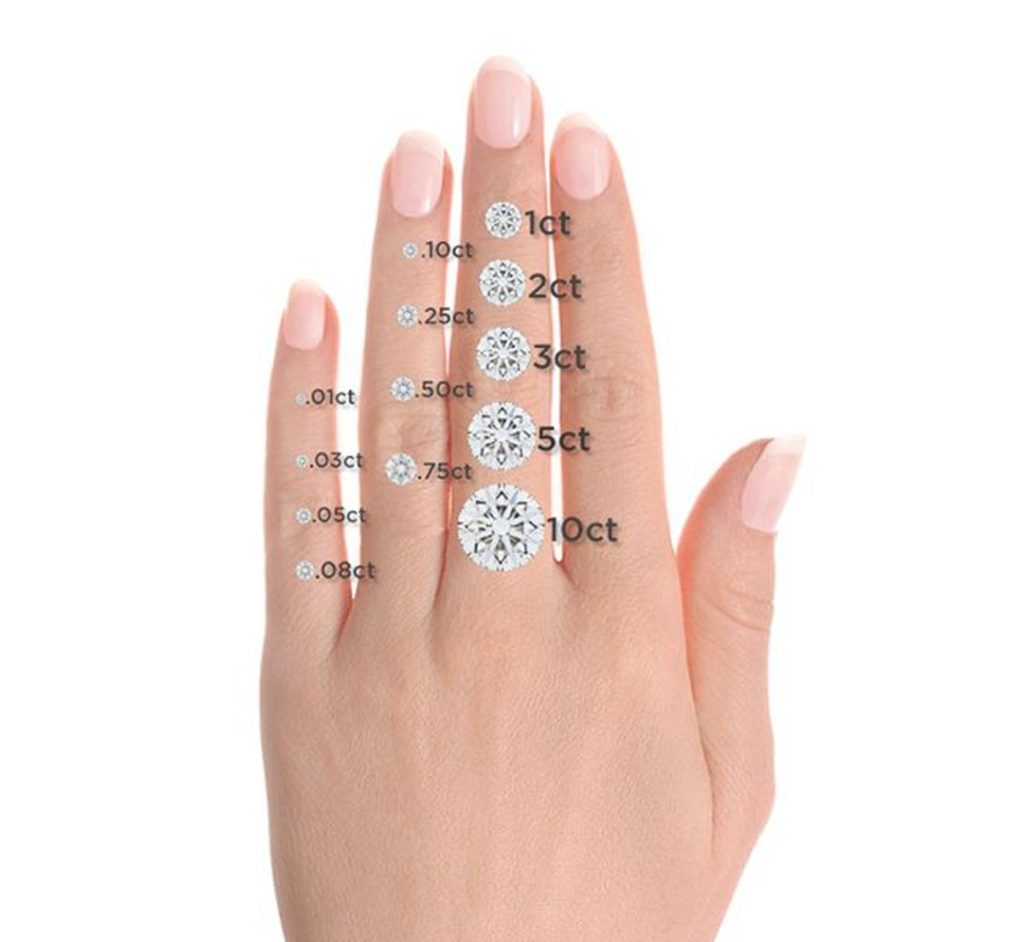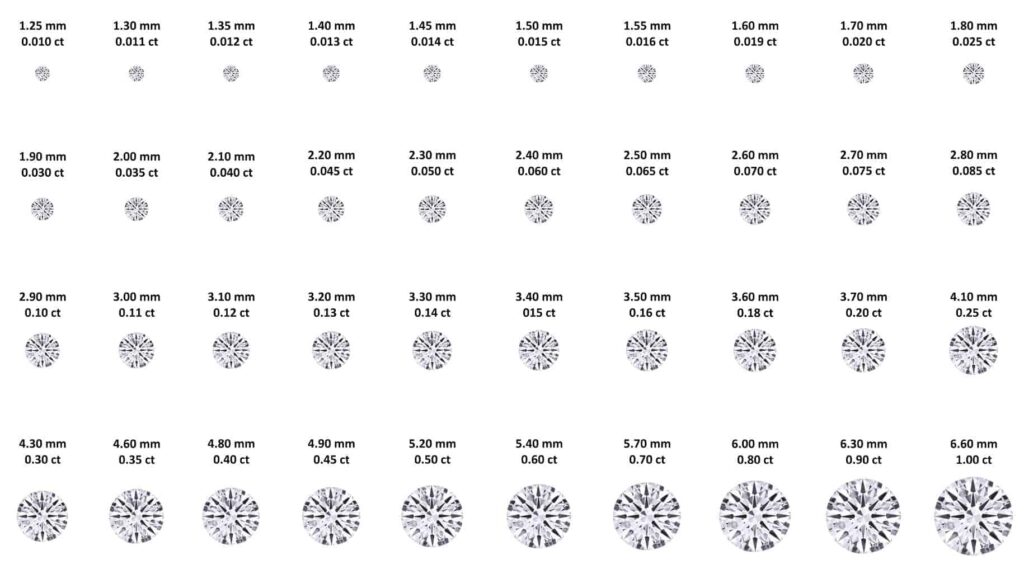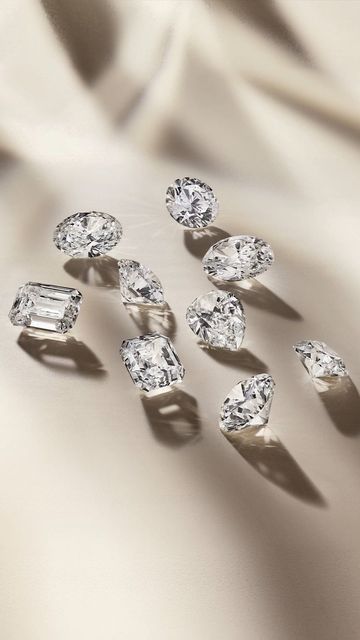Carat: A Deep Dive into Diamond Weight and Its Influence on Size, Value, and Appearance
Diamonds are one of the most coveted gemstones, with their beauty and rarity driving their value. When purchasing a diamond, the carat weight is one of the most significant factors to consider. But what does carat mean, and how does it influence the overall appearance and price of a diamond? Here’s an in-depth look at all aspects of carat weight and how it plays a role in choosing the perfect diamond.
What Is a Carat?
A carat is a unit of weight used specifically for diamonds and other gemstones. One carat is equal to 200 milligrams, or 0.2 grams. The term "carat" has its origins in the seeds of the carob tree, which were historically used as a standard unit of measurement due to their relatively uniform size. Today, the carat remains the international standard for measuring the weight of diamonds, and its role in determining the value of a diamond cannot be overstated. Carat weight is often mistakenly associated with size, but it is important to note that while carat directly measures the weight, size is a separate characteristic that depends on the cut and shape of the diamond. For example, a well-cut diamond can appear larger than a diamond of the same carat weight that is poorly cut.
How Big Is a Carat?

A one-carat diamond typically measures about 6.5 millimeters in diameter when it is round in shape. However, the size of the diamond can vary depending on its cut and shape. A round-cut diamond and a square-cut diamond of the same carat weight will have different sizes because the shape of the diamond affects how much space the stone occupies.
Here’s an example of how diamond size can vary depending on shape:
- Round Brilliant Cut: A 1-carat round diamond usually measures approximately 6.5 mm in diameter.
- Princess Cut: A 1-carat princess cut diamond may appear smaller than a round diamond because it’s a square or rectangular shape with a smaller surface area.
- Oval Cut: A 1-carat oval diamond may appear larger than a round diamond of the same carat weight due to its elongated shape.
The depth and table (the flat top of the diamond) also affect the size. A diamond with a deep cut might have less surface area, causing it to appear smaller than a shallower cut diamond with the same carat weight.
Are Diamond Carat and Diamond Size the Same Thing?
While the term “carat” is often used to describe a diamond’s size, it actually measures its weight. Therefore, carat and size are not synonymous.
The carat weight indicates the amount of material a diamond contains, but how that material is cut influences its visual size. Two diamonds of equal carat weight can have vastly different appearances. For example:
- A well-cut diamond may appear larger because the proportions of the cut allow light to reflect more efficiently, making the diamond look bigger and more brilliant.
- A deep-cut diamond may appear smaller despite having the same carat weight because more of the weight is concentrated in the depth, leaving less of the diamond’s surface exposed.
Therefore, when considering a diamond’s size, both carat weight and the cut should be taken into account.
What Does CTTW Mean?
When shopping for diamond jewelry, you may encounter the term CTTW, which stands for Total Carat Weight. CTTW refers to the cumulative weight of all diamonds in a piece of jewelry. This term is especially common in pieces like rings with multiple smaller diamonds, such as in a halo setting or a diamond band.
For example, if a ring contains three diamonds—one 0.5 carat diamond and two 0.25 carat diamonds—its CTTW would be 1 carat (0.5 + 0.25 + 0.25). Understanding CTTW is important because it gives you a sense of the overall weight of all the diamonds in a piece, not just the size of a single diamond.
How Important Is Diamond Carat?
While carat weight is an important factor, it’s not the only one that determines the quality or appeal of a diamond. The 4 Cs—carat weight, cut, clarity, and color—work together to determine the overall quality and beauty of a diamond. Each C has a unique role:
- Carat Weight: Indicates the weight (and to some extent, the size) of the diamond.
- Cut: Affects the diamond’s sparkle and how it reflects light.
- Clarity: Measures the presence of internal or external flaws (inclusions and blemishes).
- Color: Refers to the presence of color in a diamond, with colorless diamonds being more valuable.
While a larger carat weight may sound more attractive, a well-cut diamond with excellent clarity and color may be more visually appealing than a larger but poorly cut diamond.
Carat weight is crucial in determining the diamond’s visual size and how rare it is, but other factors such as cut, color, and clarity are equally important when choosing a diamond.

How Diamond Carat Impacts Price
Diamond prices tend to increase exponentially with carat weight. For instance, a two-carat diamond is usually far more expensive than two one-carat diamonds, even though they both have the same total carat weight. This is due to the rarity of larger diamonds. Larger diamonds are less common, so they are priced higher on a per-carat basis.
Additionally, as carat weight increases, the price of the diamond doesn’t just reflect the weight—it also takes into account other factors like quality of cut, color, and clarity. A larger diamond with high-quality characteristics will cost significantly more than one with lower-quality attributes.
Price Example:
A 1-carat diamond with a good cut, color, and clarity may cost approximately ₹432,700.
A 2-carat diamond with similar characteristics could cost around ₹1,038,480 or more due to the rarity and demand for larger diamonds.

Is Carat the Only Factor That Affects the Size Appearance of a Diamond?
No, carat weight is just one of several factors that determine how large a diamond appears. Other critical factors that affect the appearance of a diamond include:
- Cut: The cut of a diamond affects how light interacts with it, and thus how brilliant and lively the stone appears. A diamond with an ideal cut will sparkle more and often appear larger than a diamond of the same carat weight with a poor cut. The better the cut, the more light is reflected, which can make the diamond appear more significant and dazzling.
- Shape: Different diamond shapes have different surface areas. For example, an oval or pear-shaped diamond may appear larger than a round diamond of the same carat weight because of its elongated shape. Similarly, a square shape like the princess cut may appear smaller than a round shape.
- Depth: Diamonds with deeper cuts have more weight hidden in the depth, which can reduce the visible size. A shallower diamond, conversely, may appear larger, even if it has the same carat weight.
Other Factors:
- Setting Type: The setting of the diamond in the ring can affect its visual size. A halo setting, which places smaller diamonds around the center stone, can make the central diamond appear larger than it actually is.
Conclusion: Understanding Carat Weight in Diamonds
When shopping for diamonds, it’s essential to have a full understanding of what carat weight means and how it influences a diamond’s size, value, and appearance. While carat weight does play a major role in determining a diamond’s size and price, factors like the cut, clarity, and color are just as important in achieving the perfect balance between beauty, brilliance, and value.
At Anyra Diamonds, we encourage you to explore the full spectrum of diamond attributes when making your purchase to ensure that you select a piece that perfectly suits your preferences and budget